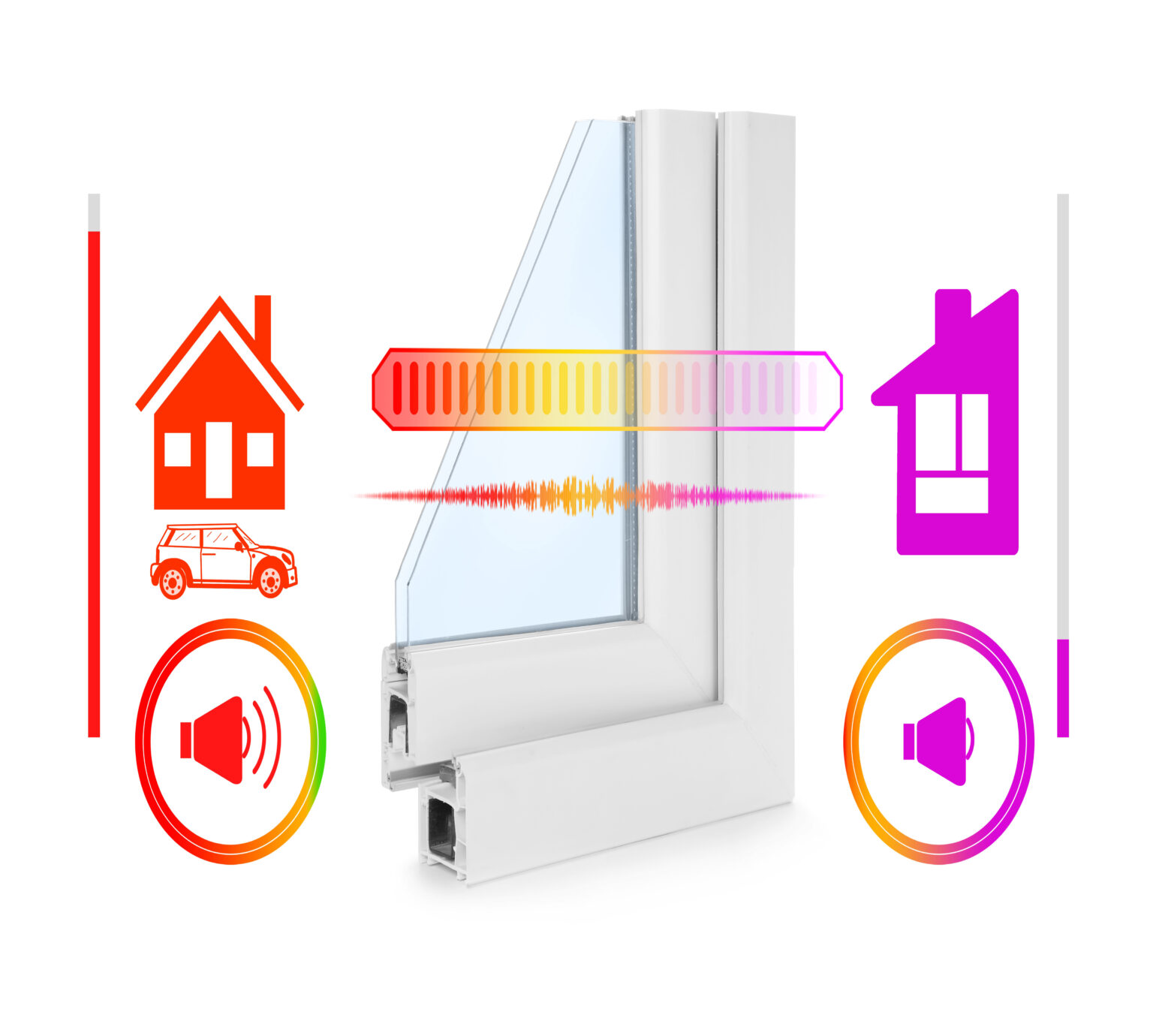Noise Reduction Range
No matter where it originates, from railways, aircraft or factories, noise is all around. Future trend research suggests that traffic and noise in general will only get worse. The careful and considered selection of glass can be crucial in helping to reduce noise level and meet noise requirements.
Click on sound simulator below to help what IGU units is required
Click here to select what glass and air gap to download data sheet
Click here and register for software can be used on PC or useful smartphone app
How it works
The highest noise insulation is achieved using an acoustic laminated glass, however varying the thickness of 2 panes also has a good performance, please refer to the figures on acoustic calculator.
Glass controls noise by:
- Reflecting the noise back towards the source
- Absorbing the noise energy within the glass
We can improve the sound insulation of glass in different ways – increasing the thickness of the pane, using laminated glass on its own or within an Insulating Glass Unit (IGU) – the larger the gap between the panes, the better the insulation.
The best performance is however obtained when using an acoustic laminated glass such as CGC Sound reduction laminated.


CGC Acoustic
All laminated glass offers improved acoustic performance however; CGC Acoustic has a specifically engineered PVB interlayer which provides a superior level of sound control over standard PVB
- The same break safe characteristics provided by our Clear range
- Specifically engineered acoustic interlayer for improved sound reduction
- Blocks a far greater range of acoustic levels
- Ideal for area’s where noise from traffic, air planes, or trains is a problem
- Complies with EN ISO 12543 and EN 14449
Today’s urban environment can generate noise levels which can have a negative impact on our daily lives. When building or renovating a building, it is therefore important to select the right materials in order to better control such environmental noise. Thanks to the use of an advanced, special interlayer, CGC Acoustic offers improved sound reduction performance. Its applications range from residential housing to public buildings such as airports, hospitals, hotels or educational facilities requiring a higher level of acoustic comfort. CGC Acoustic delivers a Sound Reduction factor (Rw) of up to 54 decibels (dB) in triple glazing and 52 dB in double glazing, creating a perceivable difference to the listener when one considers that a Rw of just 10 dB constitutes a decrease of 50% in the noise registered by the human ear.
